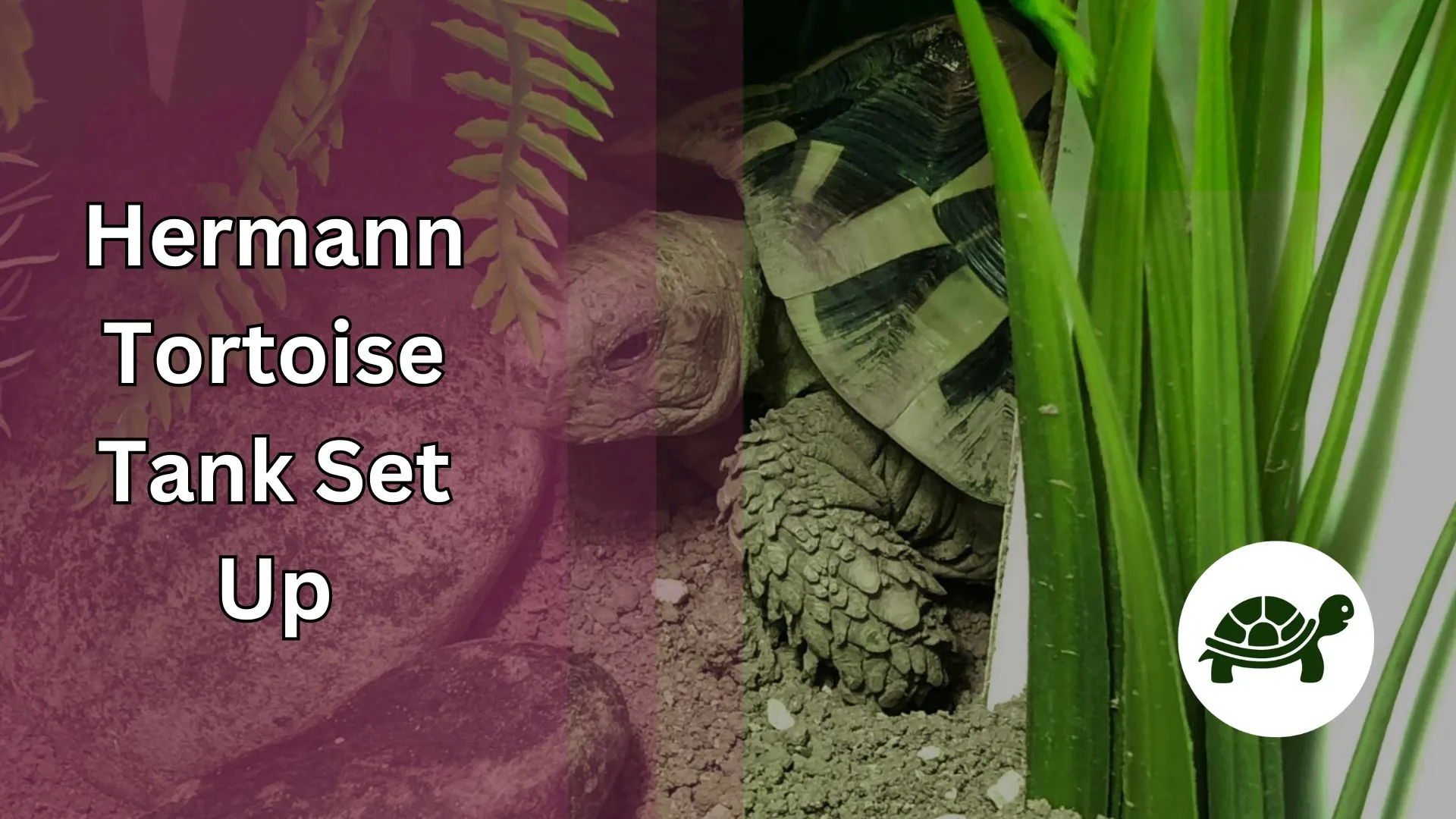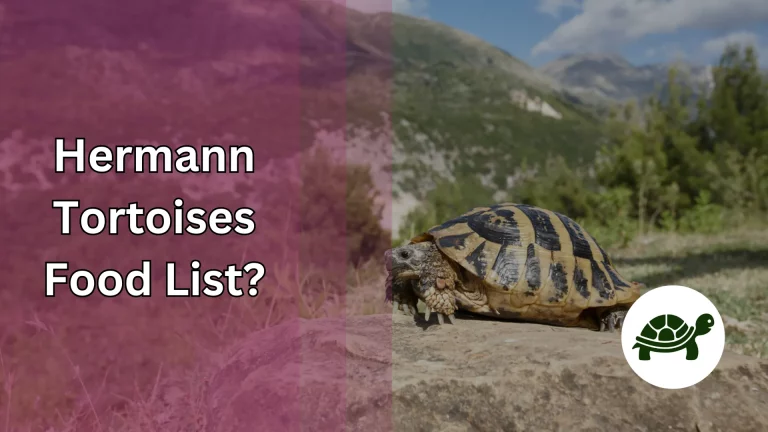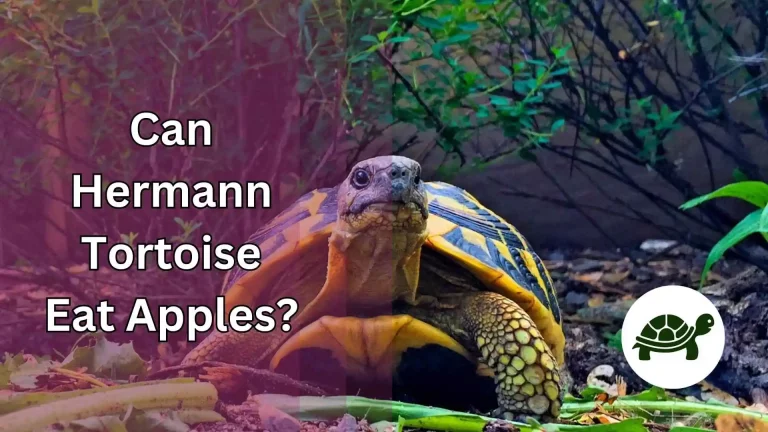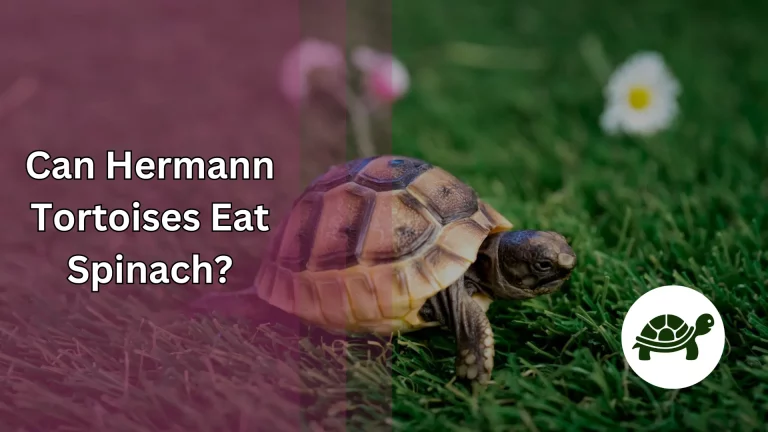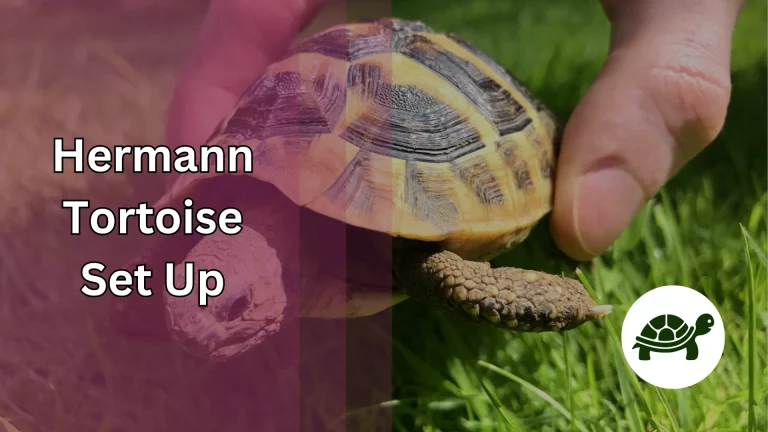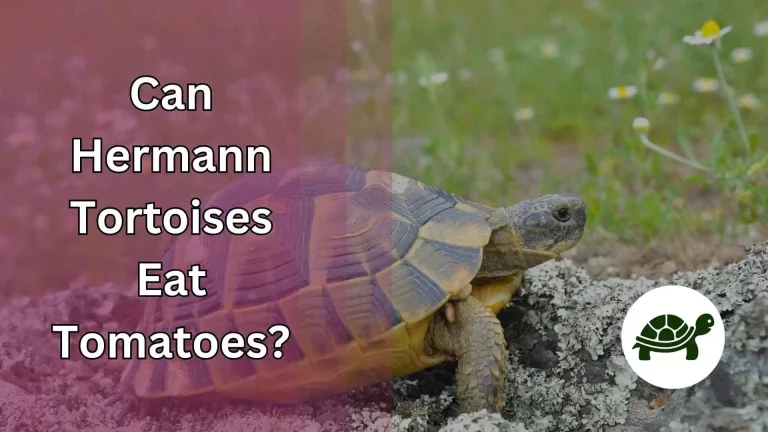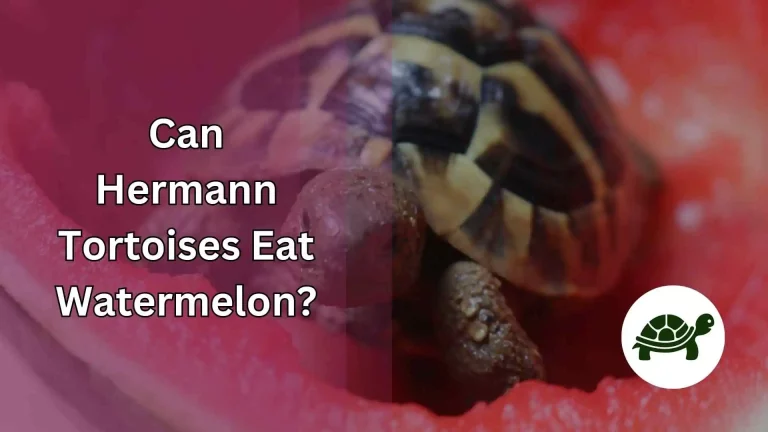Hermann Tortoise Tank Setup – All You Need To Know
Welcome to the world of Hermann tortoises, a fascinating species that captivates the hearts of reptile enthusiasts worldwide. Known for their distinctive shell patterns and gentle demeanor, these creatures are a popular choice among pet owners. However, creating the perfect habitat for them is crucial for their health and longevity. In this guide, we’ll dive into the essentials of setting up an ideal tank environment tailored specifically for Hermann tortoises, ensuring they thrive in your care.
Setting up the right tank is more than just a matter of aesthetics; it’s about recreating a slice of their natural habitat in your home. From understanding their space requirements to maintaining the correct temperature and humidity levels, every detail plays a pivotal role in their wellbeing. Stick with us as we explore the key components of a Hermann tortoise-friendly tank setup, designed to provide your shelled companion with a safe, comfortable, and enriching home.
Understanding Hermann Tortoises
Hermann tortoises are not just pets; they are a window into a fascinating natural world. Originating from Southern Europe, these small yet charming reptiles are known for their hardy nature and striking shell patterns. Each tortoise carries a unique personality, making them delightful companions for reptile lovers.
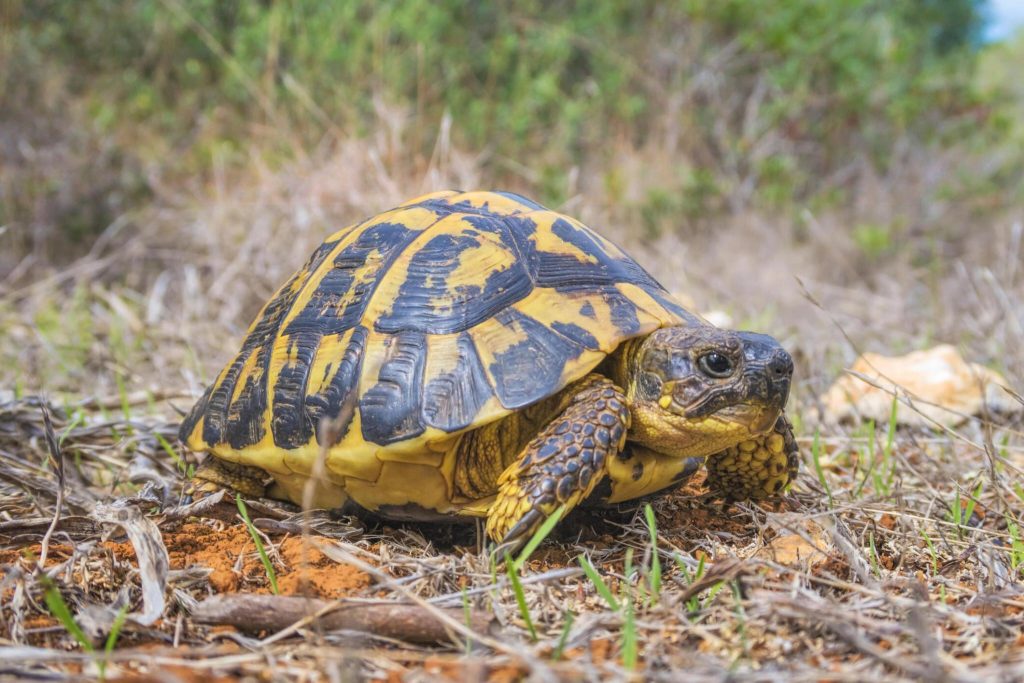
But what makes Hermann tortoises special? It’s their adaptability and ease of care, which has made them a favorite among beginners and experienced pet owners alike. They thrive when their environment mimics their natural habitat. This means as a pet owner, you need to know a bit about their natural lifestyle. For instance, they love basking in the sun and are quite active during the day.
Caring for a Hermann tortoise is a rewarding experience, but it requires commitment. These creatures can live for several decades, so think of them as a long-term companion. Their diet, habitat, and daily care needs are specific, and meeting these is crucial for their health. In the following sections, we’ll guide you through setting up the perfect home for them, ensuring they live a happy and healthy life under your care.
Choosing the Right Tank
Selecting the perfect home for your Hermann tortoise is a crucial step in their care. The right tank isn’t just a space; it’s the foundation of their health and happiness. Start with size – a common guideline is 10 gallons of tank space for every inch of your tortoise’s length. This gives them plenty of room to move, explore, and grow.
Glass aquariums are a popular choice due to their availability and clear viewing. However, remember that tortoises don’t understand glass and might constantly try to walk through it. A wooden vivarium with glass front panels is another great option. It provides better insulation and helps maintain the correct temperature and humidity levels. Make sure whichever tank you choose has a secure lid – Hermann tortoises can be surprisingly good at climbing!
When setting up your tank, location is key. Avoid placing it in direct sunlight or drafty areas. Stability in temperature and environment is vital for your tortoise’s wellbeing. In the next sections, we’ll dive into creating the perfect habitat inside your chosen tank, ensuring your Hermann tortoise feels right at home.
Creating a Suitable Environment
Creating the perfect environment inside the tank is like setting up a mini-world for your Hermann tortoise. It’s not just about filling space; it’s about crafting a home that meets their natural needs. Let’s start with the ground they walk on – the substrate. Coconut fiber or a mix of soil and sand works well. These materials mimic their natural terrain and help maintain the right humidity.
Temperature control is crucial. Hermann tortoises need a warm basking area around 95°F and a cooler side around 70°F to 75°F. This gradient lets them regulate their body temperature by moving around. Use a reliable thermometer to keep an eye on these temperatures. As for humidity, aim for 30-50%. Too dry, and they risk dehydration; too humid, and it could lead to health issues.
Remember, your Hermann tortoise’s environment affects their mood and health. So take your time to get it right. Setting up a thermometer and hygrometer will help you monitor the conditions inside the tank, ensuring they’re always just right for your shelled friend.
Lighting and UVB Requirements
Lighting is more than just brightness in your Hermann tortoise’s tank; it’s a vital part of their health. These reptiles need a good source of UVB light. This special light mimics the sun’s rays and is essential for them to make vitamin D3. Without it, they can’t absorb calcium properly, leading to serious health issues.
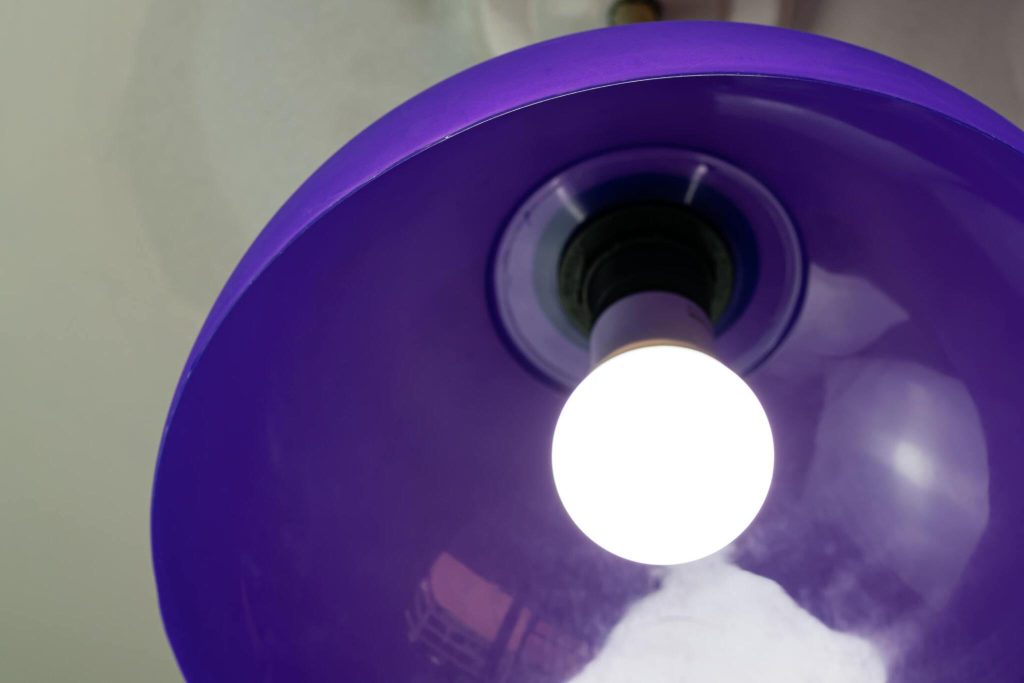
When choosing a UVB bulb, look for one that offers 5-10% UVB output. This range is ideal for Hermann tortoises. Place the light over their basking area, but ensure it doesn’t cover the entire tank. They should be able to move into shaded areas if they want. Remember to replace the bulb every six months, as UVB output decreases over time.
Good lighting isn’t just about health; it’s about creating a day and night cycle that feels natural. Aim for about 12 hours of light and 12 hours of darkness. This routine helps maintain their natural biological rhythms. With the right lighting, your Hermann tortoise will not only be healthier but also more active and happier.
Diet and Water
Feeding your Hermann tortoise the right diet is key to their health and happiness. These tortoises are primarily herbivores, loving a diet rich in leafy greens. Think romaine lettuce, kale, and dandelion greens. You can also add some variety with small amounts of fruits like strawberries or melon. Remember, variety is the spice of life, even for tortoises!
It’s also important to sprinkle their food with a calcium supplement a couple of times a week. This helps prevent shell deformities and other health issues. Avoid overfeeding protein-rich foods, as this can harm their growth and health. Think of their diet as a balance – mostly greens with a little fruit and extra nutrients.
Water is just as crucial. Always have a shallow water dish in their tank. It should be easy for them to climb in and out. Clean and refill this dish daily to ensure they have access to fresh water. Staying hydrated keeps your tortoise healthy and aids in their overall well-being.
Feeding and watering your Hermann tortoise correctly isn’t just about filling their belly. It’s about providing a balanced diet that keeps them healthy, active, and content in your care.
Enrichment and Decor
Enrichment is a key part of your Hermann tortoise’s life in their tank. It’s not just about making the tank look nice; it’s about stimulating their mind and encouraging natural behaviors. Start by adding hiding spots like small caves or hollow logs. These give your tortoise a sense of security and a place to retreat.
Plants are great for both decor and enrichment. Choose non-toxic, tortoise-safe plants like spider plants or hibiscus. They add a touch of nature and also provide a nibbling option for your pet. Just make sure the plants are pesticide-free and safe if ingested.
Rocks and a shallow water pool can also enhance their environment. They help mimic a natural habitat and provide surfaces for your tortoise to explore and climb. Arrange these elements in a way that encourages your tortoise to move around and investigate their surroundings.
Remember, the goal of enrichment is to keep your Hermann tortoise engaged and happy. A well-decorated tank isn’t just pleasing to the eye; it plays a crucial role in the mental and physical health of your shelled friend.
Maintenance Tips
Keeping your Hermann tortoise’s tank clean is essential for their health. Think of tank maintenance as a regular part of pet care. It’s not just about cleanliness; it’s about creating a safe and healthy environment for your tortoise. Start by spot cleaning daily. Remove any uneaten food, waste, or dirty substrate. This simple step helps prevent mold and bacteria growth.
A deeper clean should be done every few weeks. Take everything out of the tank, including your tortoise. Clean the tank with a reptile-safe disinfectant, rinse it well, and let it dry completely before putting everything back. This is also a good time to wash and disinfect decor items like rocks and plants.
Monitoring your tortoise’s health is also part of maintenance. Keep an eye on their eating habits, activity levels, and shell condition. If you notice any changes or signs of illness, consult a vet experienced with reptiles. Regular check-ups can catch problems early and keep your tortoise healthy for years to come.
Tank maintenance might seem like a chore, but it’s a crucial part of caring for your Hermann tortoise. A clean, well-maintained tank means a happy and healthy pet.
Common Mistakes to Avoid
Caring for a Hermann tortoise comes with its challenges, and it’s easy to make mistakes. Being aware of these can help you provide the best care for your shelled buddy. A common mistake is underestimating the size of the tank needed. Remember, a small tank can hinder your tortoise’s growth and movement. Always opt for a larger space than you think you’ll need.
Another oversight is neglecting the temperature and humidity levels in the tank. These are not just numbers; they are vital factors that affect your tortoise’s health. A tank that’s too cold or too hot can lead to serious health problems. Use thermometers and hygrometers to keep conditions just right.
Also, avoid feeding your tortoise too much fruit or protein-rich food. Their diet should mainly consist of leafy greens and vegetables. Too much fruit can cause digestive issues, and too much protein can harm their shell and kidneys.
Lastly, many forget the importance of regular veterinary check-ups. Just because your tortoise seems fine doesn’t mean they are. Regular health checks can catch issues before they become serious.
Frequently Asked Questions (FAQs)
Q1. What is the ideal lifespan of a Hermann tortoise?
Hermann tortoises have a remarkable lifespan, often living between 50 to 80 years with proper care. This long lifespan means owning one is a significant commitment, requiring consistent care and attention over many years.
Q2. Can Hermann tortoises be kept with other pets?
While Hermann tortoises are generally peaceful, they should not be housed with other species. Mixing species can lead to stress, disease transmission, and dietary conflicts. It’s best to give your Hermann tortoise its own dedicated space.
Q3. How can I tell if my Hermann tortoise is healthy?
A healthy Hermann tortoise is active, has a good appetite, clear eyes, and a firm, smooth shell. Regular bowel movements and normal walking patterns are also good indicators. Any deviation, like lethargy or loss of appetite, should be a signal to consult a vet.
Q4. How often should I clean my Hermann tortoise’s tank?
Perform spot cleaning daily to remove waste and uneaten food. A thorough cleaning, including changing the substrate and disinfecting the tank, should be done every 3-4 weeks. Regular cleaning prevents bacterial growth and keeps the environment healthy.
Q5. What type of lighting is best for a Hermann tortoise tank?
Use a UVB light bulb providing 5-10% UVB output, and ensure it covers the basking area. This lighting is crucial for vitamin D3 synthesis. Also, maintain a 12-hour light-dark cycle to mimic natural conditions.
Conclusion
Congratulations on reaching the end of this comprehensive guide on setting up the perfect tank for your Hermann tortoise. By now, you should feel more confident in your ability to create a nurturing and healthy environment for your shelled companion. Remember, the effort you put into building and maintaining their habitat plays a vital role in their overall well-being and happiness. Whether it’s choosing the right tank, maintaining the ideal temperature and humidity, or providing a balanced diet, every aspect of care you invest in contributes significantly to the health and longevity of your Hermann tortoise.
We encourage you to revisit this guide as needed and keep learning about the best practices in Hermann tortoise care. Every tortoise is unique, and as you grow with your pet, you’ll discover the joys and rewards of responsible pet ownership. Don’t forget, your dedication and love make all the difference. Here’s to many happy years with your Hermann tortoise, a journey that’s not just about caring for a pet, but about fostering a fascinating and rewarding relationship.

